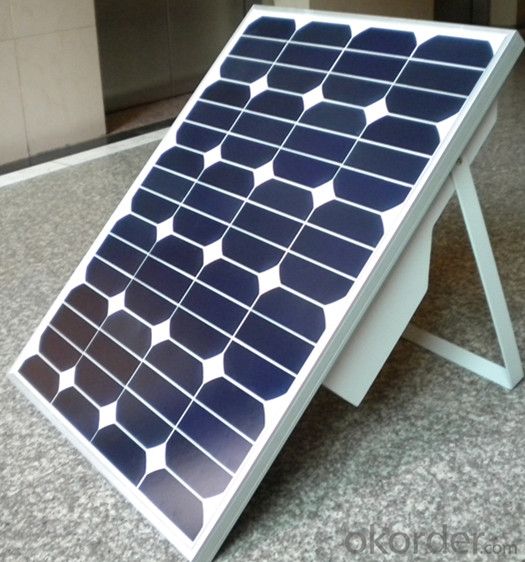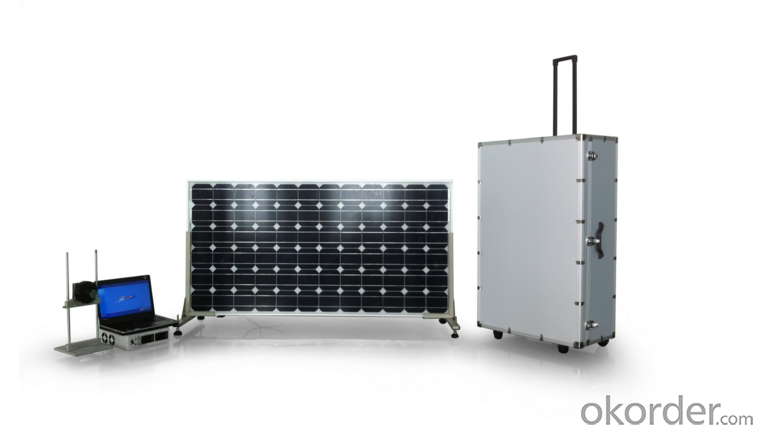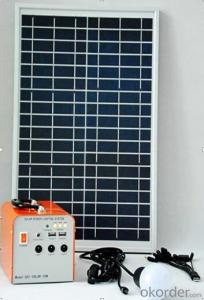Solar Portable System AN-S10W
- Loading Port:
- Shanghai
- Payment Terms:
- TT OR LC
- Min Order Qty:
- 0 set
- Supply Capability:
- 10000 set/month
OKorder Service Pledge
OKorder Financial Service
You Might Also Like
Item specifice
Description of Solar Portable System AN-S10W
Compatible portable solar power supply, also called solar mobile power, it includes: solar panel, charge controller, discharge controller, electric charge controller, inverter, outside enlarge capacity interface and battery, etc. Photovoltaic portable power supply can work in solar energy and ordinary power two modes, and can automatically switch. Photovoltaic portable power supply is used widely is the emergency relief, tourism, army, geological prospecting, archaeology, schools, hospitals, Banks, gas stations, comprehensive building, highway, substation, family camping or outdoor activities such as emergency power ideal power supply equipment.
Specifications of Solar Portable System AN-S10W
1. Solar Panel: 10W 18V
2. Battery: 12V5A lead-acid battery
Input terminal: 1 DC input, 9V
Output terminal: 4 output terminals, including:
1x USB output, 5V 1A;
3x DC outputs, 6V 1A
Switch: one square On/Off general switch
Indication lamp: 2 pcs; Red one is for charging indication, Green one is for operating indication.
Accessories of Solar Portable System AN-S10W
1. 2pcs 3W led bulbs;
2. 1pc 3m connection wire between solar panel and cabinet;
3. 2pcs lamp holder with 3m wire;
4. 1pc AC charger
Technical Data of Solar Portable System AN-S10W
| Internal Package Size (cm) | 26*16.5*21 |
| Packing QTY | 4 |
| External Package Size (cm) | 30*47*43.5 |
IMages of Solar Portable System AN-S10W



FAQ:
1. How long will my inquiry get response?
Your inquiry related to our products or prices will be replied within 24 hours.
2. Can I get professional service and suggestion?
Well-trained and experienced staffs to answer all your questions in fluent English.
3. Do you accept OEM or customized design?
OEM & ODM, any your customized lightings we can help you to design and put into product.
4. What if I need specific design?
Distributorship are offered for your unique design and some our current models.
- Q:Can solar energy systems be used in residential areas with homeowners associations?
- Yes, solar energy systems can be used in residential areas with homeowners associations. However, it is important to review and comply with the HOA's guidelines and regulations regarding the installation of solar panels. Some associations may have specific requirements or restrictions, such as design guidelines, placement restrictions, or approval processes. It is recommended to consult with the homeowners association and work together to find a solution that meets both the homeowner's desire for solar energy and the association's guidelines.
- Q:What is the impact of dust storms on solar panels?
- Solar panels can be significantly affected by dust storms. The build-up of dust and debris on the panel surface can block sunlight, resulting in reduced efficiency and electricity generation. Dust particles act as a barrier, preventing sunlight from converting into electricity, leading to decreased power output and overall performance. Moreover, physical damage can also occur during dust storms. The panel surfaces can be scratched or chipped by abrasive particles carried by strong winds, causing long-term degradation and reduced efficiency. Additionally, the accumulation of dust and debris can raise the panel temperature, further decreasing efficiency. To mitigate the impact of dust storms, regular cleaning and maintenance are crucial. Periodic cleaning removes dust and debris, helping to maintain efficiency and maximize electricity generation. Furthermore, installing tilt systems or self-cleaning technologies can effectively prevent or shed off dust accumulation, minimizing the impact of dust storms. In conclusion, dust storms can negatively affect solar panels, reducing efficiency and potentially causing physical damage. However, proper maintenance and cleaning practices can minimize these effects, allowing solar panels to continue generating clean and sustainable energy.
- Q:Are there any disadvantages to using solar energy systems?
- Yes, there are a few disadvantages to using solar energy systems. Firstly, the initial installation cost of solar panels and equipment can be relatively high, making it less affordable for some individuals or businesses. Additionally, solar energy generation is dependent on sunlight availability, meaning that energy production may vary depending on weather conditions or geographic location. Finally, the storage of excess energy can be challenging, as efficient and cost-effective battery storage technology is still developing. However, despite these drawbacks, the long-term benefits, such as cost savings, reduced environmental impact, and energy independence, make solar energy systems a sustainable and promising option.
- Q:Can solar energy systems be used in areas with frequent cloud cover?
- Yes, solar energy systems can still be used in areas with frequent cloud cover. While cloud cover can reduce the amount of sunlight reaching the solar panels, modern solar energy systems are designed to efficiently harness even indirect sunlight. Additionally, advancements in technology, such as the use of tracking systems and more efficient panels, have made it possible to generate electricity from solar energy even in areas with less consistent sunlight.
- Q:Can solar energy systems be used in areas with limited access to solar batteries?
- Yes, solar energy systems can still be used in areas with limited access to solar batteries. While solar batteries are a convenient way to store excess energy generated by solar panels for use during non-sunny periods, they are not the only option for utilizing solar energy. In areas with limited access to solar batteries, alternative methods such as grid-tied systems or direct use of solar power can be employed. Grid-tied systems allow excess energy to be fed back into the electrical grid, while direct use involves utilizing solar power immediately as it is generated. Therefore, solar energy systems can still be effectively used in areas without access to solar batteries.
- Q:Can solar energy systems be used for powering oil and gas extraction operations?
- Yes, solar energy systems can be used for powering oil and gas extraction operations. By utilizing solar panels, the sun's energy can be harnessed and converted into electricity to power various equipment and machinery involved in the extraction process. This not only reduces the reliance on traditional fossil fuel-based energy sources but also helps in minimizing the carbon footprint and promoting sustainable practices in the oil and gas industry.
- Q:Can solar energy systems be used for powering RVs or boats?
- Yes, solar energy systems can be used for powering RVs or boats. Solar panels can be installed on the roof or deck of an RV or boat to capture sunlight and convert it into electricity. This renewable energy source can be used to power various appliances and equipment onboard, providing a sustainable and eco-friendly alternative to traditional fuel-powered generators.
- Q:Can a solar energy system be used in areas with limited sunlight?
- Indeed, the utilization of a solar energy system remains feasible in regions with limited sunlight. Although solar panels are most effective when directly exposed to sunlight, they are still capable of generating power in areas with limited sunlight. Even on cloudy days or during periods of low sunlight, solar panels can still produce electricity, albeit with reduced efficiency. Furthermore, the advancement of solar panel technology enables panels to capture and convert even diffuse sunlight, enabling their functionality in areas with limited direct sunlight. Additionally, solar energy systems can be tailored to incorporate energy storage solutions such as batteries. This enables the storage of excess energy generated during peak sunlight hours for later use during periods of limited sunlight. Consequently, solar energy remains a viable and sustainable solution for various regions worldwide, even those with limited sunlight.
- Q:Are there any safety certifications required for solar energy systems?
- Solar energy systems require safety certifications to ensure their safe operation. In most countries, these systems must meet specific safety standards and regulations before installation. These certifications guarantee that the solar panels, inverters, and other components are manufactured and installed in a way that minimizes electrical hazards, fire risks, and other safety concerns. The International Electrotechnical Commission (IEC) 61730 standard is one of the most common safety certifications for solar energy systems. It ensures that the solar panels meet strict safety requirements, including mechanical strength, resistance to environmental factors, and electrical insulation. It also includes tests for fire resistance, which is crucial to prevent potential hazards. Safety certifications are also required for solar inverters, which convert the DC generated by solar panels into the AC used in homes and businesses. The IEC 62109 standard is widely recognized for verifying that inverters meet safety requirements such as electrical insulation, protection against overvoltage and overcurrent, and proper grounding. Moreover, the installation of solar energy systems must comply with local electrical and building codes that often incorporate safety requirements. These codes guarantee correct and safe installation, including proper wiring, grounding, and protection against electrical faults. Adhering to these safety certifications and regulations is essential for solar energy system manufacturers, installers, and users. It ensures the safe and reliable operation of the systems, minimizing the risk of electrical accidents, fires, and other safety hazards. This provides peace of mind to both system owners and the surrounding community.
- Q:What is the impact of fire on solar panels?
- Solar panels can suffer significant and detrimental effects from fires. These fires can directly damage the panels, resulting in complete destruction or rendering them inoperable. The high temperatures generated by fires can cause delicate components, such as the photovoltaic cells and wiring, to melt or warp. This damage can render the panels incapable of producing electricity. Moreover, fires produce smoke and soot that can cover the surface of solar panels, obstructing sunlight and reducing their efficiency. This diminishes the amount of light they can absorb, resulting in a significant decrease in power output. In addition to physical damage, fires pose a safety risk to the surrounding area. Since solar panels are often installed on rooftops or in open areas, they are vulnerable to fire hazards. If a fire occurs near or on a solar panel, it increases the risk of spreading and causing further property damage. To minimize the impact of fires on solar panels, it is crucial to implement proper fire safety measures. This includes using fire-resistant materials for installation and ensuring adequate protection from potential fire sources. Regular maintenance and cleaning are also necessary to remove debris and soot, maximizing efficiency and reducing the risk of damage during a fire. Overall, fires can have severe consequences for solar panels, including physical damage, reduced efficiency, and safety risks. Taking necessary precautions and implementing fire safety measures are essential to protect solar panels and minimize potential losses.
1. Manufacturer Overview |
|
|---|---|
| Location | |
| Year Established | |
| Annual Output Value | |
| Main Markets | |
| Company Certifications | |
2. Manufacturer Certificates |
|
|---|---|
| a) Certification Name | |
| Range | |
| Reference | |
| Validity Period | |
3. Manufacturer Capability |
|
|---|---|
| a)Trade Capacity | |
| Nearest Port | |
| Export Percentage | |
| No.of Employees in Trade Department | |
| Language Spoken: | |
| b)Factory Information | |
| Factory Size: | |
| No. of Production Lines | |
| Contract Manufacturing | |
| Product Price Range | |
Send your message to us
Solar Portable System AN-S10W
- Loading Port:
- Shanghai
- Payment Terms:
- TT OR LC
- Min Order Qty:
- 0 set
- Supply Capability:
- 10000 set/month
OKorder Service Pledge
OKorder Financial Service
Similar products
New products
Hot products
Related keywords
































